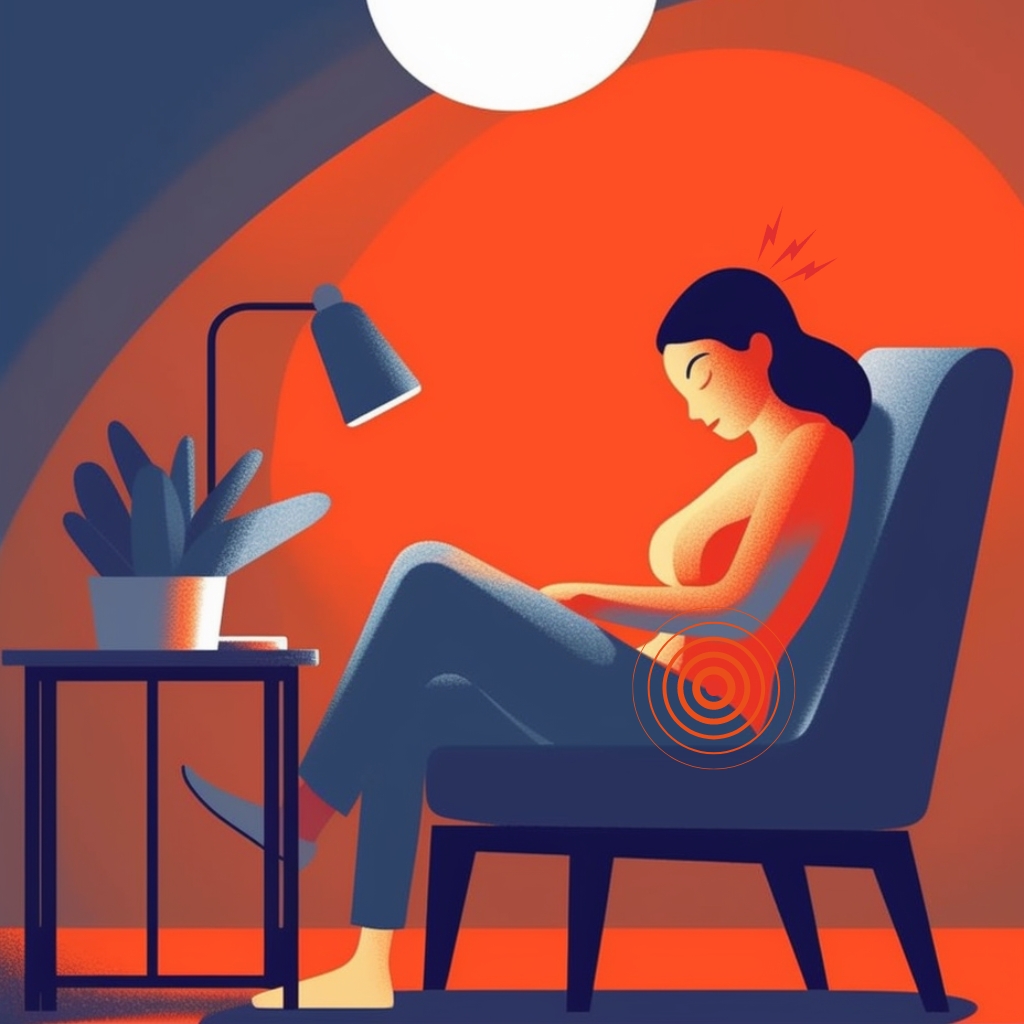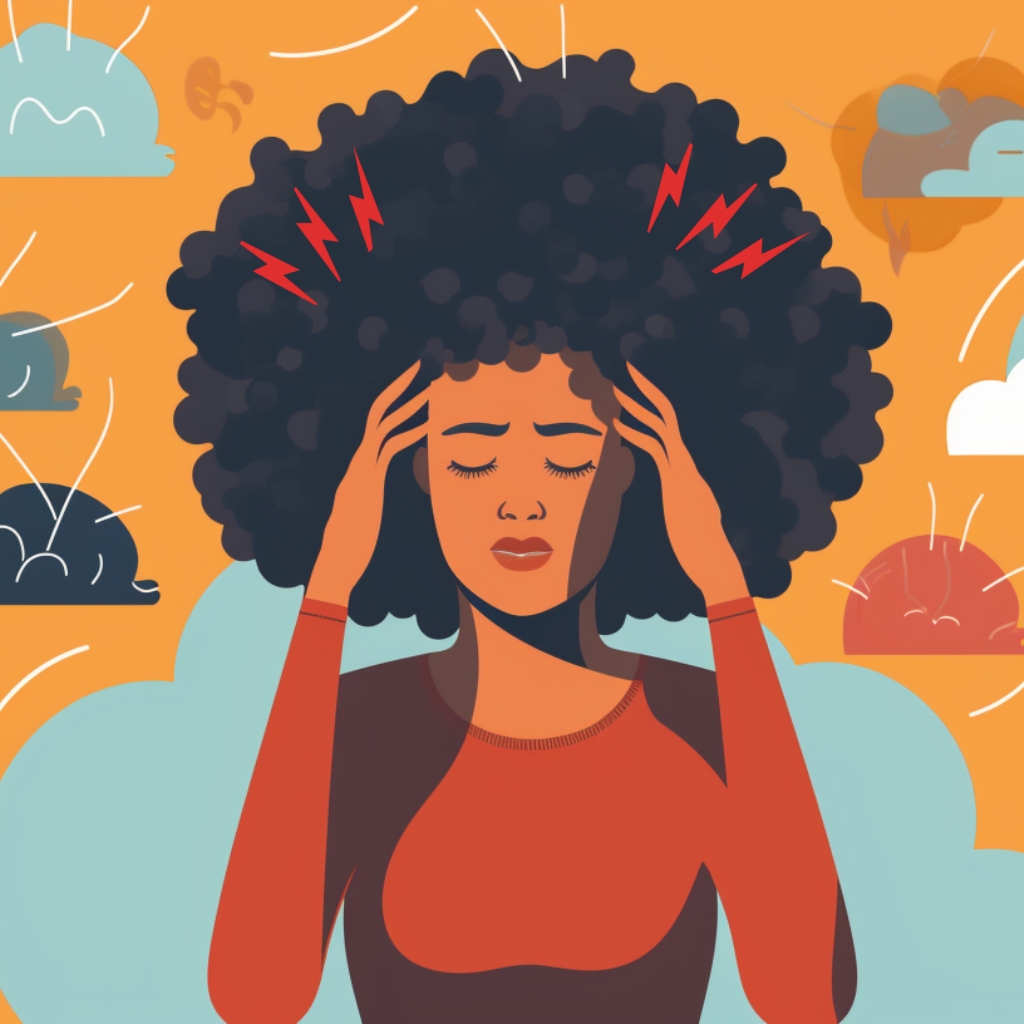PMDD vs. PMS, What Is The Difference?

Premenstrual syndrome (PMS) and premenstrual dysphoric disorder (PMDD) are two conditions that affect women during the menstrual cycle. Many ask about the difference between PMDD and PMS; while both involve symptoms occurring in the premenstrual phase, it is crucial to understand the distinctions between them.
This article aims to provide a comprehensive comparison of PMDD and PMS, shedding light on their differences and similarities. You might ask what the difference is between PMS and PMDD; in the following sections, we will delve into the PMDD vs. PMS symptoms, diagnostic criteria, potential causes, and treatment options for PMDD and PMS. By the end of this article, readers will have a comprehensive understanding of these conditions, empowering them to seek appropriate medical guidance and support.
PMDD vs. PMS, Definition and Overview
Premenstrual syndrome (PMS) and premenstrual dysphoric disorder (PMDD) are two different conditions that occur in relation to the menstrual cycle. Understanding their definitions and differences is crucial to provide appropriate care and support.
According to the National Library of Medicine, PMS is a term used to describe a range of physical and emotional symptoms experienced by women in the days or weeks leading up to menstruation. These symptoms can vary widely, including bloating, breast tenderness, fatigue, mood swings, irritability, and food cravings. While PMS symptoms can be bothersome, they typically do not significantly impair daily functioning.

On the other hand, PMDD is a more severe form of premenstrual syndrome, characterized by intense emotional and psychological symptoms that can significantly impact a woman’s daily life. Research suggests that approximately 3-8% of menstruating individuals may experience PMDD. The symptoms of PMDD often include severe mood swings, irritability, anger, depression, anxiety, and feelings of hopelessness.
It is important to note that while PMS and PMDD share some common symptoms, the severity and impact on daily functioning distinguish PMDD from PMS. As outlined in the Diagnostic and Statistical Manual of Mental Disorders (DSM-5), the specific criteria for diagnosing PMDD include at least five emotional or psychological symptoms that significantly interfere with daily activities during the premenstrual phase. This distinction is crucial for accurate diagnosis and appropriate treatment.
| Suggestion: PMS vs. Period | Differences and Symptoms
PMDD vs. PMS Symptoms
PMS and PMDD are characterized by a range of symptoms that occur in relation to the menstrual cycle. While they share some common symptoms, PMDD symptoms tend to be more severe and can significantly impact daily functioning.

According to the National Library of Medicine, common symptoms shared by both PMS and PMDD include:
- Bloating: Many women experience bloating during the premenstrual phase, feeling fullness and abdominal discomfort.
- Breast tenderness: Breast tenderness or sensitivity is a common symptom experienced in both PMS and PMDD. This discomfort may vary in intensity and usually subsides with the onset of menstruation.
- Fatigue: Fatigue is a frequent complaint among women with PMS and PMDD. It is characterized by low energy, tiredness, and decreased motivation.
In addition to these shared symptoms, PMDD is associated with more pronounced emotional and psychological symptoms, including:
- Severe mood swings: PMDD is characterized by intense and rapid mood changes, often involving feelings of sadness, irritability, and emotional sensitivity.
- Irritability: Women with PMDD may experience heightened irritability and feelings of anger, which can lead to conflicts in relationships and disruptions in daily life.
- Anxiety: Anxiety symptoms, such as restlessness, tension, and a sense of unease, are more prevalent in PMDD than PMS.
- Depression: PMDD is strongly associated with depressive symptoms, including sadness, hopelessness, and loss of interest in activities usually enjoyed.
It is important to note that PMDD symptoms tend to be more severe and disruptive than those of PMS. These intense emotional and psychological symptoms can significantly impact a woman’s quality of life, relationships, and overall well-being.
| Read more: Uncommon PMS Symptoms
PMDD vs. PMS, Diagnosis, and Criteria
Accurate diagnosis of PMS and PMDD is essential to provide appropriate care and support. The diagnostic criteria for these conditions help healthcare professionals identify and differentiate between them.
Diagnosing PMS typically involves assessing specific symptoms that occur consistently during the premenstrual phase of the menstrual cycle. While there is no specific test to diagnose PMS, tracking symptoms over at least two menstrual cycles is important to establish a pattern. The American College of Obstetricians and Gynecologists (ACOG) recommends that symptoms be present five days before menstruation and improve within a few days after the onset of menstruation. It is crucial to rule out other medical conditions that may mimic or exacerbate PMS symptoms through a thorough medical evaluation.
| Discover: Worst PMS Symptoms

In contrast, diagnosing PMDD requires a more stringent set of criteria due to the severity and impact of the symptoms. The Diagnostic and Statistical Manual of Mental Disorders, Fifth Edition (DSM-5), provides specific criteria for diagnosing PMDD. These criteria include at least five emotional or psychological symptoms, such as mood swings, irritability, depression, anxiety, and decreased interest in activities, significantly interfering with daily functioning. These symptoms must occur the week before menstruation, improve within a few days after the onset of menstruation, and be absent during the follicular phase of the menstrual cycle.
To ensure an accurate diagnosis, it is crucial for individuals to track and document their symptoms over several menstrual cycles. This can be done through symptom diaries or mobile applications specifically designed for menstrual tracking. Symptom tracking helps establish the cyclic nature of symptoms, identify patterns, and determine if the symptoms align with the diagnostic criteria for PMS or PMDD.
In addition to symptom tracking, healthcare professionals may consider ruling out other medical or psychiatric conditions that could contribute to the symptoms or mimic PMS/PMDD. This comprehensive evaluation helps ensure an accurate diagnosis and appropriate management strategies.
By following the established diagnostic criteria and tracking symptoms over multiple menstrual cycles, healthcare providers can effectively identify and differentiate between PMS and PMDD, leading to personalized treatment plans and support for individuals experiencing these conditions.
“Learn More”
PMDD vs. PMS, Causes and Contributing Factors
Understanding the underlying causes and contributing factors for PMS and PMDD can provide insights into the development and management of these conditions. While the exact causes are not fully understood, hormonal changes and imbalances play a significant role in both PMS and PMDD.
According to the National Library of Medicine, hormonal fluctuations during the menstrual cycle are considered one of the main triggers for PMS and PMDD. The rise and fall of estrogen and progesterone levels can affect neurotransmitters in the brain, leading to mood and physical symptoms. However, the specific mechanisms through which hormonal changes contribute to symptoms are still being studied.
| Related: How Anxiety Can Affect PMS?

In the case of PMDD, serotonin, a neurotransmitter associated with mood regulation, has been found to play a crucial role. Women with PMDD may experience altered serotonin function, which can contribute to the emotional and psychological symptoms associated with the condition. Serotonin levels naturally fluctuate during the menstrual cycle, but in individuals with PMDD, these fluctuations may be more pronounced or dysregulated, leading to heightened mood disturbances.
While hormonal changes and serotonin dysregulation are significant, other elements may contribute to developing PMS and PMDD. Genetics can play a role, as studies have shown that women with a family history of PMS or PMDD are more likely to experience these conditions. Lifestyle factors, such as poor nutrition, lack of exercise, and inadequate sleep, can also influence symptom severity. Additionally, stress and emotional factors may exacerbate symptoms, as women who experience high levels of stress or have underlying mood disorders may be more susceptible to the impact of hormonal changes.
It is important to note that while these factors are associated with PMS and PMDD, they do not fully explain the conditions’ complexities. Further research is needed to understand better the interplay between hormonal, genetic, and environmental factors in developing these conditions.
By recognizing the various contributing factors, healthcare professionals can develop a comprehensive approach to managing PMS and PMDD. Treatment strategies often involve a combination of lifestyle modifications, stress management techniques, hormonal interventions, and, in some cases, medication targeting serotonin function.
| Also might be interesting: PMS Dizziness
PMDD vs. PMS, Treatment and Management
When it comes to managing PMS and PMDD, various treatment options are available to help alleviate symptoms and improve overall well-being. These treatment approaches may range from lifestyle modifications to medication interventions, depending on the severity of the symptoms and their impact on daily functioning.
- Lifestyle Changes and Self-Care Strategies: According to the National Library of Medicine, making certain lifestyle adjustments and adopting self-care practices can have a positive impact on symptom management. Regular exercise, such as aerobic activities or yoga, has been shown to reduce PMS symptoms. Stress reduction techniques, such as mindfulness meditation or deep breathing exercises, can also help alleviate symptoms by promoting relaxation and emotional well-being. Additionally, dietary adjustments, such as reducing salt and sugar intake and increasing consumption of complex carbohydrates and foods rich in calcium and vitamin D, may provide relief.
- Over-the-Counter Medications: For milder PMS symptoms, over-the-counter medications can be effective in managing specific symptoms. Nonsteroidal anti-inflammatory drugs (NSAIDs) like ibuprofen or naproxen sodium can help alleviate pain, cramps, and breast tenderness. Diuretics can be useful for reducing bloating and fluid retention.
- Specialized Treatment for PMDD: PMDD often requires more specialized treatment approaches due to the severity and impact of symptoms. Selective serotonin reuptake inhibitors (SSRIs), such as fluoxetine, sertraline, or escitalopram, are commonly prescribed to regulate serotonin levels and alleviate mood symptoms. These medications can be taken daily or selectively during the premenstrual phase. Hormonal interventions, such as oral contraceptives or gonadotropin-releasing hormone agonists, may also be considered for symptom management.
| Read more: PMS Hot Flashes

It is important to note that treatment plans should be individualized based on symptom severity, personal preferences, and the healthcare provider’s expertise. Regular communication with healthcare professionals is crucial to assess treatment effectiveness, adjust medications if necessary, and monitor any potential side effects.
In addition to medical interventions, psychotherapy or counseling may benefit individuals with PMS or PMDD. Cognitive-behavioral therapy (CBT) can help individuals develop coping strategies, improve problem-solving skills, and address any underlying emotional factors contributing to symptom severity.
Collaborating with healthcare providers to develop a comprehensive treatment plan that combines lifestyle modifications, self-care strategies, and medication or therapy is essential. By implementing a holistic approach, individuals can better manage their symptoms, enhance their overall well-being, and regain control over their lives.
“Explore the power of vitamins for managing PMS discomfort.”
Learn which vitamin could be your key to a smoother menstrual cycle:
Seeking Professional Help
When dealing with PMS and PMDD, seeking professional help to ensure accurate diagnosis, personalized treatment plans, and ongoing support is crucial. Consulting a healthcare provider experienced in treating PMS and PMDD can make a significant difference in managing these conditions effectively.

- Accurate Diagnosis: Obtaining an accurate diagnosis is the first step toward managing PMS and PMDD. While tracking symptoms over several menstrual cycles can provide valuable information, a healthcare professional can thoroughly evaluate the symptoms, rule out other potential causes, and determine if the criteria for PMS or PMDD are met. This ensures that the right treatment approach is pursued and any underlying conditions are addressed.
- Personalized Treatment Plans: Everyone is unique, and treatment plans should be tailored to meet their needs. A qualified healthcare provider can assess the severity of symptoms, consider the individual’s medical history, and collaborate with them to develop a comprehensive treatment plan. This may involve a combination of lifestyle modifications, medication interventions, therapy, and ongoing monitoring to optimize symptom management and overall well-being.
- Ongoing Support: PMS and PMDD are chronic conditions that require ongoing support. Regular follow-up visits with a healthcare provider can help assess treatment effectiveness, adjust medications if needed, and provide emotional support. A healthcare professional who understands the complexities of these conditions can provide reassurance and guidance throughout the management process.
Remember that building a strong, trusting relationship with a healthcare provider is key to effective management. Open communication, sharing symptoms and concerns, and actively participating in treatment decisions can improve outcomes and quality of life.
| Suggestion: PMS Constipation
Is PMDD Similar to Bipolar?
Premenstrual dysphoric disorder (PMDD) and bipolar disorder are distinct mental health conditions, but they can share some similarities regarding mood symptoms. PMDD is a condition that occurs specifically in relation to the menstrual cycle and is characterized by severe emotional and psychological symptoms in the premenstrual phase. Bipolar disorder, on the other hand, is a chronic mental illness characterized by episodes of mood swings ranging from depressive lows to manic highs. While overlapping symptoms may exist, it is important to consult a healthcare professional for an accurate diagnosis and appropriate treatment.
HealWiser’s Last Piece of Advice
Understanding the differences and similarities between PMS and PMDD is crucial for promoting early detection, accurate diagnosis, and effective management of these conditions. PMS refers to a range of physical and emotional symptoms before menstruation, while PMDD represents a more severe form of PMS characterized by intense emotional and psychological symptoms.
Share your experience with Heal Wiser and others in the comments section below this post.





